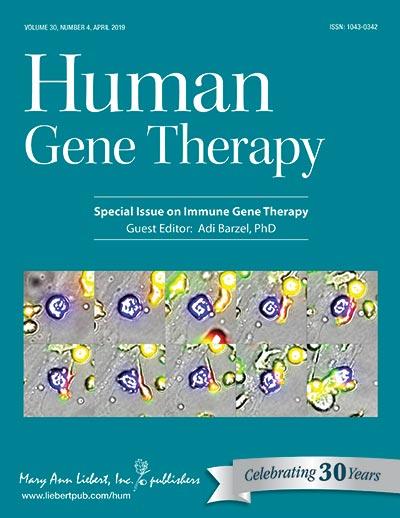
Credit: Mary Ann Liebert, Inc., publishers
New Rochelle, NY, April 18, 2019–Gene therapy offers the promise of a cure for beta-thalassemia and a new study has shown that it is associated with fewer complications and hospital admissions over 2 years than treatment by allogeneic hematopoietic stem cell transplantation (HSCT). The study, which analyzes and compares the effectiveness and cost of gene therapy versus (HSCT) in patients with major beta-thalassemia is published in Human Gene Therapy, a peer-reviewed journal from Mary Ann Liebert, Inc., publishers. Click here to read the full-text article free on the Human Gene Therapy website through May 18, 2019.
Séverine Coquerelle, URC Eco-Assistance Publique Hôpitaux de Paris, Université Paris Diderot (Sorbonne Paris Cité), and CRESS, INSERM UMR (Paris), France led a team of French researchers in publishing the article entitled “Innovative Curative Treatment of Beta Thalassemia: Cost-Efficacy Analysis of Gene Therapy Versus Allogenic Hematopoietic Stem-Cell Transplantation.” Patients treated with HSCT had 3 times more frequent infectious complications. Gene therapy was shown to be about 2.8 times more costly, with nearly half the cost of gene therapy accounted for by preparation of the delivery vector.
“There has been much discussion and controversy about the high cost of gene therapy, but what has been lacking is a direct comparison to alternative therapies, which them-selves are also often very costly and may produce suboptimal outcomes,” says Editor-in-Chief Terence R. Flotte, MD, Celia and Isaac Haidak Professor of Medical Education and Dean, Provost, and Executive Deputy Chancellor, University of Massachusetts Med-ical School, Worcester, MA. “This study does a critical comparison of both cost and out-comes for patients with beta-thalassemia, whose primary alternative to gene therapy would be hematopoietic stem cell transplantation. These data may enable a more rational debate of the overall value of gene therapy for this relatively common genetic disease.”
###
About the Journal
Human Gene Therapy the Official Journal of the European Society of Gene and Cell Therapy, British Society for Gene and Cell Therapy, French Society of Cell and Gene Therapy, German Society of Gene Therapy, and five other gene therapy societies, is an authoritative peer-reviewed journal published monthly in print and online. Led by Editor-in-Chief Terence R. Flotte, MD, Celia and Isaac Haidak Professor of Medical Education and Dean, Provost, and Executive Deputy Chancellor, University of Massachusetts Medical School, Human Gene Therapy presents reports on the transfer and expression of genes in mammals, including humans. Related topics include improvements in vector development, delivery systems, and animal models, particularly in the areas of cancer, heart disease, viral disease, genetic disease, and neurological disease, as well as ethical, legal, and regulatory issues related to the gene transfer in humans. Its companion journals, Human Gene Therapy Methods, published bimonthly, focuses on the application of gene therapy to product testing and development, and Human Gene Therapy Clinical Development, published quarterly, features data relevant to the regulatory review and commercial development of cell and gene therapy products. Tables of contents for all three publications and a free sample issue may be viewed on the Human Gene Therapy website.
About the Publisher
Mary Ann Liebert, Inc., publishers is a privately held, fully integrated media company known for establishing authoritative peer-reviewed journals in many promising areas of science and biomedical research, including Nucleic Acid Therapeutics, Tissue Engineering, Stem Cells and Development, and Cellular Reprogramming. Its biotechnology trade magazine, GEN (Genetic Engineering & Biotechnology News), was the first in its field and is today the industry’s most widely read publication worldwide. A complete list of the firm’s 80 journals, books, and newsmagazines is available on the Mary Ann Liebert, Inc., publishers website.
Media Contact
Kathryn Ryan
[email protected]
Original Source
https:/
Related Journal Article
http://dx.




